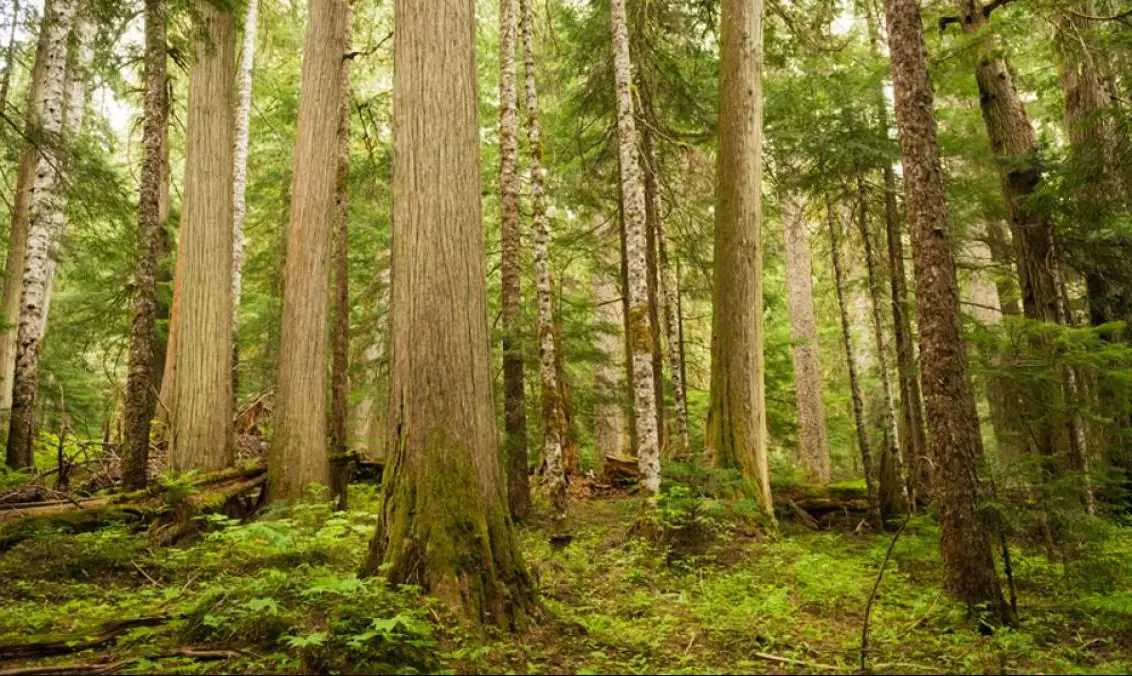The loss of wildlife diversity and ecosystem fragmentation have triggered the phenomenon known as the empty forest or silent forest syndrome. It refers to forests that appear intact but have lost much of their wildlife, affecting ecological processes like pollination and seed dispersal, essential for their survival. This biodiversity loss is widespread in Latin America and globally, and it continues to advance, largely due to the expansion of the industry behind “renewable energies.”
The article Evidence of a seed dispersal crisis in Europe, recently published in the scientific journal Science, states that if frugivorous animals disappear, forest collapse would be inevitable, as over 85% of tree species in tropical rainforests depend on them for seed dispersal. In our region, studies like Estudio del síndrome de bosque vacío (Study of the empty forest syndrome) by Iván Bladimir Morillo show that in Latin American regions like the Andean Chocó—cloud forests in northwestern Ecuador—over 90% of medium and large vertebrates have disappeared. And throughout Latin America, up to 88% of tropical forests face the threat of defaunation, which has side effects not only on human communities that depend on wildlife for their livelihood but also on forests’ capacity to store methane and carbon and maintain their ecological integrity.
The extermination of wildlife has been caused by replacing forests with pastures for livestock, building roads without considering ecosystem connectivity, hunting, and urban expansion. But above all, it is due to deforestation for the expansion of crops like corn, soy, and others needed for biofuel production, the construction of hydroelectric dams, forest fires, and the extraction of minerals required for the energy transition in the Global North.
Fighting climate change at the cost of biodiversity
Forest fragmentation and desertification have been ongoing for decades, long before the emergence of renewable energies, and result from an extractive model and so-called development. Mining and monoculture have isolated natural areas, creating forest islands or isolated river channels incapable of sustaining healthy populations of wildlife and plants. Moreover, infrastructures like roads, urban developments, and hydroelectric dams subdivide ecosystems, blocking species movement and fragmenting habitats.
In recent years, however, mining in the region’s forests and jungles has gone from being a low-impact artisanal activity to becoming a large-scale industry, while monoculture for biofuel production continues to expand unchecked. This activity not only destroys large forest areas but also fragments ecosystems and pollutes rivers with mercury, sulfuric acid, and other toxic chemicals, severely impacting biodiversity and the local communities that depend on these resources.
In this context, the concept of “clean energy,” although presented as a solution to climate change, fails to address the underlying problems of exploiting the planet’s common goods, often mislabeled as “natural resources.” Renewable energies maintain an extractive logic and continue to impact new areas.
According to the organization MiningWatch Canada, the copper demand boom could increase by 200% to 300% by 2050, mainly driven by vehicle electrification and renewable energies. Much of the untapped copper reserves are located in high-biodiversity regions like the Amazon and Chocó tropical forests.
What is being done?
The consequences of the empty forest syndrome have been under-researched. However, various regenerative initiatives have emerged in response to this crisis, offering alternatives for reconnecting ecosystems. For example, permaculture and syntropic agriculture seek, along with other strategies, not only sustainability but also the integral regeneration of degraded ecosystems. These proposals aim to restore biodiversity and lost ecological functions, promoting a more harmonious balance between human activities and nature.
Syntropic agriculture, developed by Ernst Götsch in Brazil in the 1980s, is a regenerative farming system that mimics the natural processes of ecological succession to restore degraded soils and increase biodiversity. This method, which promotes soil fertility and enhances biodiversity, is being replicated in various regions of Brazil and Latin America as a regenerative alternative to traditional agriculture.
Permaculture, the sustainable farming system that seeks to harmonize food production with the environment by imitating natural patterns, has been adopted in several regions to restore lands degraded by mining and monoculture. In Colombia, the Permaculture Colombia Foundation has regenerated over 100 hectares in Antioquia affected by gold mining, and in Brazil, the Cerrado Permaculture and Ecovillages Institute recovered over 50 hectares in Goiás after years of soy monoculture.
Another way to combat this problem is through community resistance. In the Amazon, indigenous peoples have established autonomous territories to conserve their natural resources, such as the Sarayaku people, known for their firm resistance to oil exploitation. In Ecuador, citizen groups like Quito sin Minería and Yasunidos have promoted and won popular consultations proposing a new social and economic paradigm based on nature’s rights.
However, one of the most effective responses to extractivism has been local governance. Through voluntary conservation agreements, communities have led initiatives protecting the essential biological corridors for wildlife, based on democratic processes at local and national levels.
Conclusions
In the face of this environmental and civilizational crisis, it is necessary to go beyond actions aimed at reversing damage. We must rethink the concept of clean energy and question the logic of green extractivism, which, under the promise of technological solutions to mitigate climate change, continues to exploit the planet’s resources. A paradigm shift is needed to deconstruct the extractive logic and embrace a regenerative vision of the relationship between humans and nature.
The empty forest syndrome is a reminder that ecosystems are not just resources to be exploited but living systems that require care and respect. Solutions to the environmental crisis must be based on degrowth, deceleration, ecosystem restoration, biodiversity regeneration, life revaluation, and the defense of nature’s rights.
Instead of promoting clean energies that are neither environmentally sustainable nor socially just for communities and that perpetuate exploitation, we should invest in regenerative models that respect natural cycles and promote ecological justice and peace, which is currently scarce in humanity.
*A text produced in conjunction with the Inter-American Institute for Global Change Research (IAI). The opinions expressed in this publication are those of the authors and not necessarily those of their organizations.












